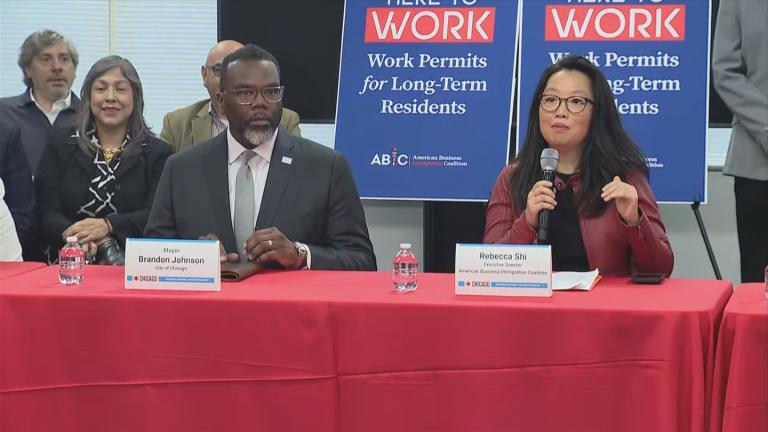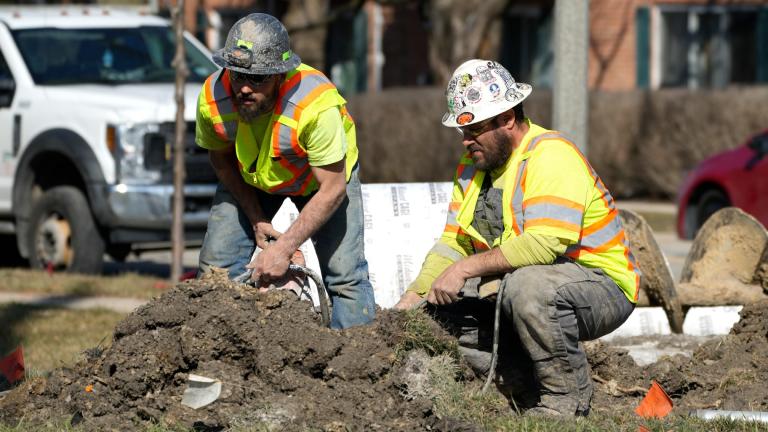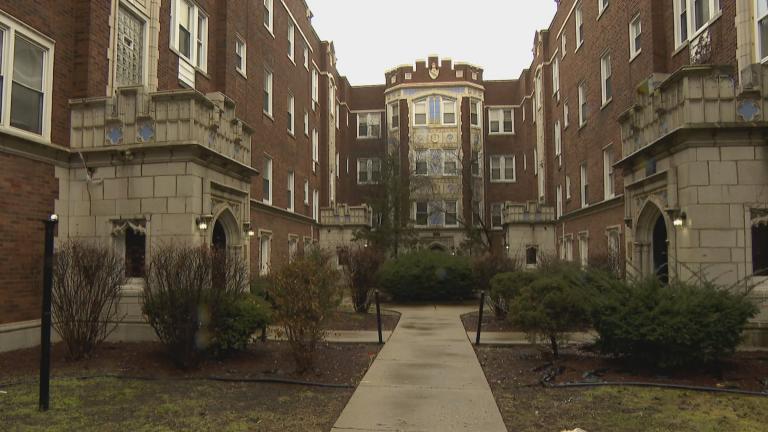Gas prices are up. Food costs more. And for low-wage workers, wages are up too – by law.
Starting July 1, the minimum wage is increasing for those who work in Chicago or the rest of Cook County anyway.
By how much depends.
After staying stagnant from 2020-2021, in suburban Cook County, the untipped minimum wage will rise by 35 cents to 13.35 an hour.
Chicago has various floors based on whether the employee depends heavily on tips and the size of the business they work for.
Starting next month, minimum wage employees of larger businesses (with 21 employees or more) will see their paychecks rise by 40 cents an hour to $15.40 while those who work for businesses that employ 4-20 people will make at least $14.50.
For jobs that rely heavily on tips, the minimum wage is $9.24 at larger companies, and tips are supposed to make up the difference so an employee reaches the same $15.50 an hour minimum.
The impact of raising government-mandated wage floors is debatable, even by economists.
Chair of the economics department at Northern Illinois University, Carl Campbell, said there been a lot of research on the impact of the minimum wage on employment and the results are often at odds.
“The argument for increasing the minimum wage is that it really helps people at the lower end of the income spectrum … they’re earning more they can better support their families in that case,” he said. “On the other hand, it might reduce employment. It makes hiring workers more expensive for companies, so therefore you would expect companies to hire fewer workers.”
In Chicago, the degree to which the minimum wage changes is determined in part on economic factors.
Per the city, “the minimum wage for larger employees increases annually according to the Consumer Price Index or 2.5%, whichever is lower, since reaching $15 per hour in 2021. The minimum wage for small businesses continues to increase towards $15 per hour by 2023.”
Cook County uses a more complicated formula “based on the greatest rate among the Federal minimum wage, Illinois State minimum wage, or on the County’s calculation using the Consumer Price Index (CPI)” with the minimum wage calculation not coming into play “when the unemployment rate in Cook County is 8.5% or greater. This year the unemployment rate did not warrant the recessionary breaker. However, the 8.3% April CPI exceeded the inflationary cap, so the 2.5% cap rate was used.”
Campbell says the July wage increases for Chicago aren’t keeping pace with the economy.
Inflation nationally is up over 8%. Chicago workers will get less than 3% of an increase because of the minimum wage step.
Getting to over $15, let alone above it, is a big deal in the national lobby for a living wage.
SEIU Healthcare Illinois was a leader in the decadelong Fight for 15.
“It’s clearly not enough in light of our current crisis around inflation. When you talk about gas prices, food prices. You know $32,000 a year isn’t enough simply to even have a place to live (in Chicago),” SEIU Healthcare Illinois President Greg Kelley said. “So, while we’re excited – it could be much worse, right – we still have a long, long way to get the type of wages that working people need, particularly in this moment.”
Kelley foresees the fight moving to the national stage, with groups calling on Congress to take up a federal increase in the minimum wage.
Illinois Hispanic Chamber of Commerce CEO Jaime di Paulo said at this point, the local minimum wage hike boosts won’t mean much because businesses have to pay beyond that if they want workers.
He said members of the chamber, like certain restaurants, are paying $25 for kitchen line cooks – more than such jobs paid in the past.
“Employees are working way beyond the minimum wage because it’s an employees’ market out there. So the fact that the minimum wage is going up, it doesn’t really affect anything,” di Paulo said. “It just creates a more robust economy and increases the economic development in low-wage areas … so people have more spending money so they can support small businesses.”
Even with an employees’ market, SEIU union steward Marcus Duell, who for a dozen years has worked at Northwestern Memorial Hospital as a housekeeping assistant, said hospitals aren’t paying enough.
“The morale is very low because of it. That and being short-staffed. Which it kinda works hand-in-hand, because when they do hire people on to Northwestern and they work a few days, they quit because the work that they expect the workers to do isn’t worth the pay,” Duell said. “What they’re offering -- $15.60 – it’s not cutting the mustard.”
Kelley said issues surrounding pay impact more than those making a minimum wage. When people can’t afford to take care of themselves, it impacts all of society. He said that’s what’s playing out now.
“We are in a crisis and unless we begin to address real problems around pay and income, the issues around crime and violence are only going to get worse,” Kelley said.
The minimum wage isn’t the only change taking effect in July.
Chicago’s Fair Workweek Ordinance will have stricter requirements on businesses regarding scheduling, such that employees earning the equivalent of $56,381.85 or less in a year who work in covered industries like building services, health care, hospitality and retail (as long as the employer has 100 or more employees globally) will have to get at least 14 days’ notice of their work hours.
Kelley says that allows especially those working multiple jobs to have a semblance of stability, but di Paulo said it can be too constraining.
“If the restaurant’s slow, they want an opportunity to go home early and this law does not allow that. You’ve got to give flexibility to employers,” di Paulo said.
Illinois law also has steps that will boost the minimum wage to $15, but not until 2025.
The state minimum wage increase for 2022 took effect in January, when it rose from $11 last year to $12 an hour this year.
The intra-state patchwork is a sensible approach to Campbell.
“Areas are so different in the states. We have Chicago – very urban area. And we have a lot of really rural areas and basically costs of living are much higher in Chicago than they are in downstate or a lot of the rural areas,” he said.
Follow Amanda Vinicky on Twitter: @AmandaVinicky








